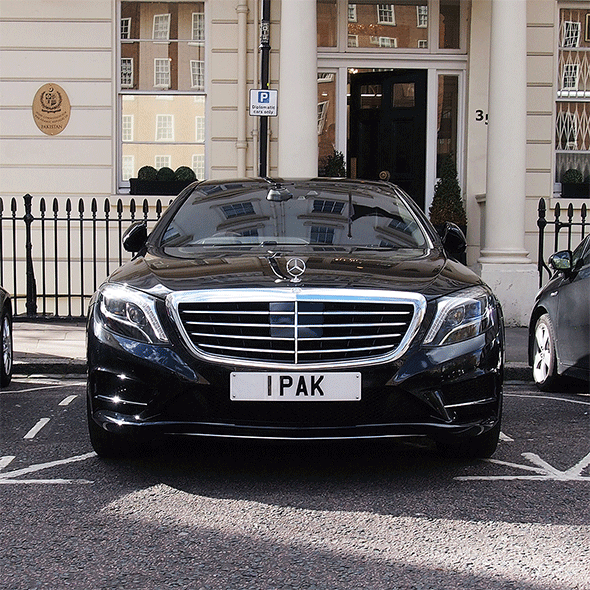Diplomatic number plates explained
What are diplomatic number plates?
If you're out and about in London, you may notice some oddly formatted number plates on the road, particularly in areas where you tend to find embassies of other countries. These number plates are known as diplomatic number plates and are used on vehicles operated by foreign embassies, high commissions, consulates and international organisations.
Prior to 1979, diplomatic number plates were typically taken from the pool of standard issue number plates. These were often dateless number plates and in some cases were previously void number plates, being reinstated for specific embassies. As well as these number plates being reinstated, some embassies were issued with number plates containing letters that are excluded from the UK registration system.
These number plates typically started or ended with a 1, and then three characters from the country name. For example, India received the IND 1 registration and Jamaica received 1 JAM. In some cases, countries were issued plates that spelled the country name exactly, with Spain receiving the number plate SPA 1N and Fiji being issued with FIJ 1.
The current format
In 1979 a format was introduced specially for diplomatic vehicles. This format consists of three numbers, followed by either X or D, followed by a further three numbers.
The first three numbers in the format represent the country or international organisation, for example Sweden; which has been allocated the numbers 259. In some cases, for larger countries, a range of numbers issued, for example Spain, which has been issued the range 253 to 255.
The letter in the number plate represents the type of person the vehicle is allocated to, with D being used for diplomats and X for non-diplomatic accredited personnel.
The final three numbers in the number plate are identifiers, with the range 101 to 399 being used for diplomats, 400 to 699 for non-diplomatic staff, and 700 to 999 for consular staff.
The font used for diplomatic plates differs to the standard Charles Wright font used for plates issued in the United Kingdom, and is narrower than normal. This is to prevent people easily cloning diplomatic number plates.
How many diplomatic vehicles are in use?
As per a freedom of information request from 2016, the number of diplomatic vehicles in use does vary widely depending on the country. Smaller countries like Nepal and Lebanon have 7 and 5 diplomatic vehicles respectively, with some countries like Pakistan and Poland having 103 and 100.
The country with the largest number of diplomatic vehicles as of 2016 is the United States, with a massive 631 diplomatic vehicles. In second place is Saudi Arabia with 309 and in third place is the United Arab Emirates with 191.
Are diplomatic vehicles exempt from the law?
Diplomatic vehicles are not exempt from the law, but the person driving may have diplomatic immunity under the Vienna Convention. This means that it in some cases the person driving the vehicle cannot be prosecuted, and as a result, a lot of smaller traffic offences are often ignored by witnessing police officers.
Whilst not exempt from the law, diplomatic vehicles are exempt from vehicle emissions tax. So even if these vehicles are massive gas guzzlers, there's nothing to pay!

